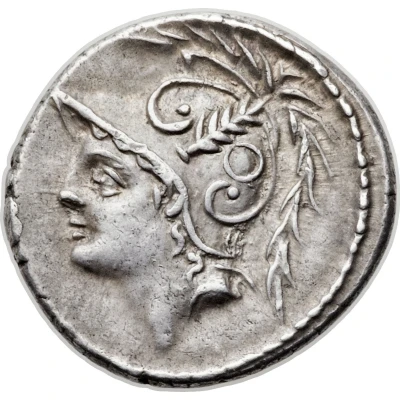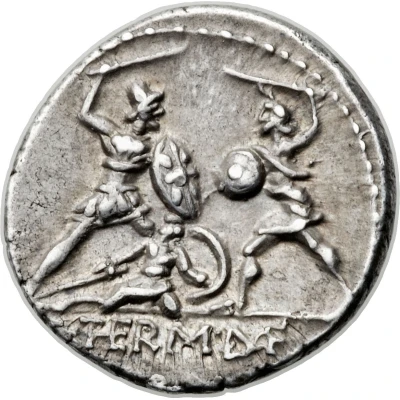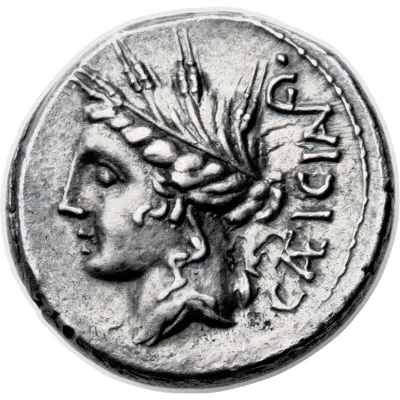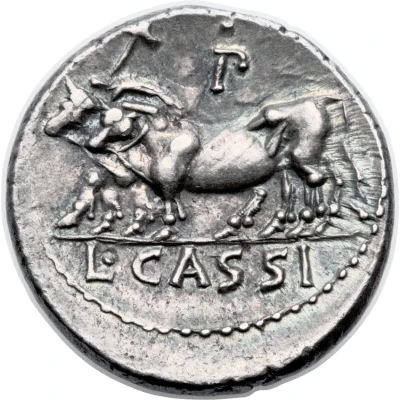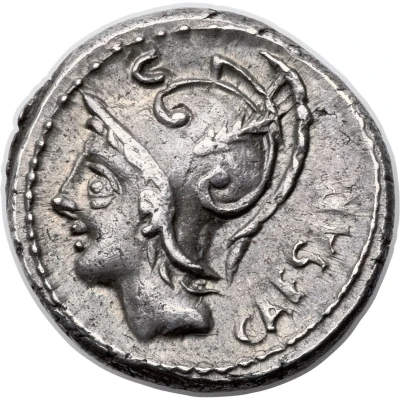
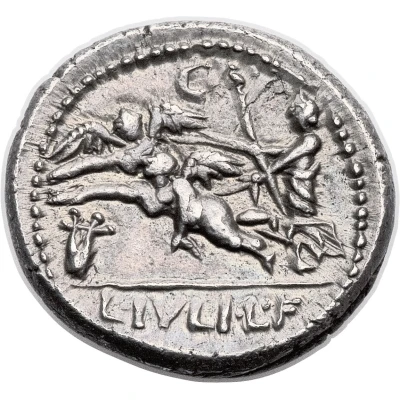

© Heritage Auctions
Denarius Julia: Lucius Julius Caesar; CAESAR / L•IVLI•L•F 103 BC
103 BC year| Silver | 3.92 g | 17 mm |
| Issuer | Rome › Roman Republic (509 BC - 27 BC) |
|---|---|
| Period | Republic (509 BC - 27 BC) |
| Type | Standard circulation coin |
| Year | 103 BC |
| Value | Denarius (1) |
| Currency | Denarius of 16 Asses (141 – 27 BC) |
| Composition | Silver |
| Weight | 3.92 g |
| Diameter | 17 mm |
| Shape | Round (irregular) |
| Technique | Hammered |
| Orientation | Variable alignment ↺ |
| Demonetized | Yes |
| Updated | 2024-10-06 |
| Numista | N#66724 |
|---|---|
| Rarity index | 91% |
Reverse
Venus in chariot drawn left by two flying Cupids, holding sceptre in right hand and reins in left hand; control-letter above; below, a lyre.
Part of moneyer mark in exergue.
Border of dots.
Script: Latin
Lettering: L•IVLI•L•F
Translation: Lucius Julius L. f.
Comment
The gens Julia was one of the most ancient patrician families at Ancient Rome. Members of the gens attained the highest dignities of the state in the earliest times of the Republic. The first of the family to obtain the consulship was Gaius Julius Iulus in 489 BC. The gens is perhaps best known, however, for Gaius Julius Caesar, the dictator, and uncle of the emperor Augustus, through whom the name was passed to the so-called Julio-Claudian dynasty of the first century AD. The nomen Julius became quite common in imperial times, as the descendants of persons enrolled as citizens under the early emperors began to make their mark in history.Interesting fact
The Denarius coin featuring Lucius Julius Caesar was minted during a time of significant political upheaval in Rome. Caesar's assassination in 44 BC led to a power struggle that ultimately resulted in the end of the Roman Republic and the rise of the Roman Empire under Caesar's adopted son, Octavian (later known as Augustus). This coin, minted just a few decades before these events, represents a pivotal moment in Roman history.
